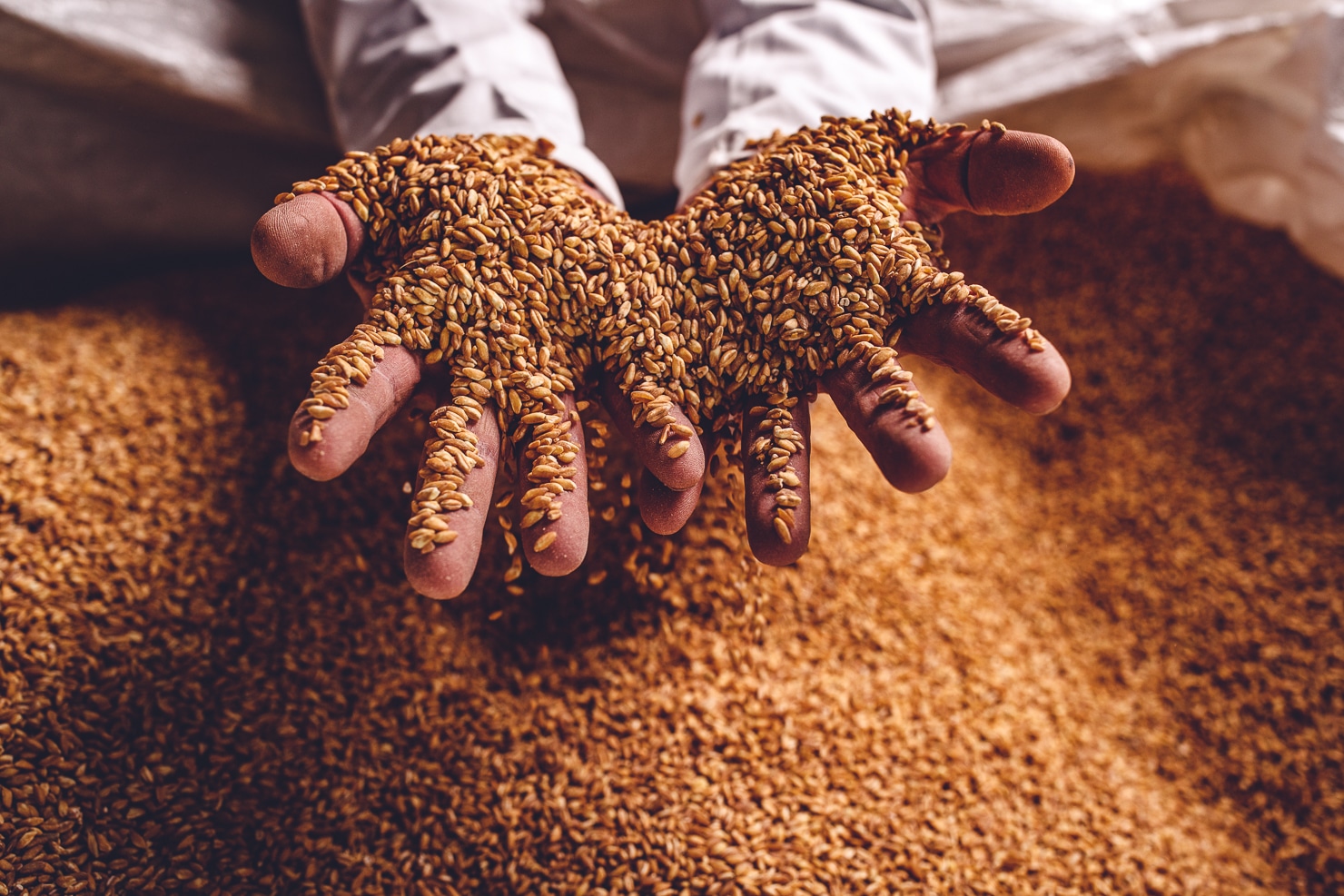GIORNATA MONDIALE DELL’ALIMENTAZIONE: Ecco come Nutrirsi

Ogni 16 ottobre si celebra la Giornata mondiale dell’alimentazione per ricordare la nascita della Organizzazione delle Nazioni Unite per l’alimentazione e per l’agricoltura, più comunemente conosciuta come FAO. Anche quest’anno l’impegno dell’Organizzazione internazionale è quello di diffondere quante più informazioni su una nutrizione sana e migliorare la sostenibilità ambientale. Obiettivo principale è ridurre la fame nel mondo attraverso una campagna mondiale di informazione diretta da uno slogan semplice ma efficace: ALIMENTAZIONE SANA. Per farlo, spiega al FAO, occorre maggiore consapevolezza da parte di tutti nella nutrizione quotidiana e soprattutto un impegno reale a volersi più bene. Privilegiare pasti sani, a base di legumi, cereali, vegetali, fa bene al singolo e al Pianeta stesso.
Food and Agriculture Organization of the United Nations
La Giornata mondiale dell’alimentazione anche quest’anno prevede la focalizzazione su alcuni temi specifici. Consigli, vademecum o semplicemente la possibilità di intravedere un nuovo percorso nel nostro modo di nutrirci e di nutrire chi amiamo:
Questi sono i punti così sintetizzati dalla FAO:
- I legumi e la frutta secca sono ottime fonti di proteine vegetali. I legumi, in particolare, rappresentano un pasto ricco di minerali e proteine, ma povero economicamente, quindi accessibile anche alle classi meno abbienti.
- È consigliabile ridurre, se non eliminare, le bevante e i cibi raffinati e lavorati industrialmente, ricchi di grassi saturi, zucchero e sale, e di non mangiare quantità eccessive di prodotti di origine animale. Se proprio non puoi farne a meno, fallo con moderazione.
- Ogni volta che puoi, sostituisci gli alimenti raffinati con quelli integrali. Questo discorso è valido per quasi tutti gli alimenti di origine vegetale, come riso, farina, pasta, pane e derivati.
- I grassi insaturi fanno parte di una dieta sana e provengono esclusivamente da oli vegetali, pesce e frutta secca. Occorre ridurre i grassi saturi e trans di origine animale portatori di colesterolo cattivo.
LINEE GUIDA PER UNA SANA ALIMENTAZIONE ITALIANA
Una linea guida semplice ed efficace promossa da FAO nella Giornata mondiale dell’alimentazione per incoraggiare una nutrizione sempre più sana e consapevole e contrastare la fame nel mondo. Se milioni di persone soffrono la fame, dall’altra parte un numero sempre maggiore soffre di obesità. L’hashtag #famezero ormai da qualche anno creato per la Giornata mondiale dell’alimentazione ha l’intento di sviluppare, insieme ai programmi esposti da esperti e ricercatori, vere e proprie politiche nutrizionali e intensi programmi educativi a favore di una alimentazione vantaggiosa per l’essere umano e per l’ambiente. Ogni Paese adotta, con la supervisione di FAO, le sue linee guida. In Italia l’Istituto nazionale di ricerca per gli Alimenti e la nutrizione si è occupato già dal 2003 di diffondere un documento intitolato “LINEE GUIDA PER UNA SANA ALIMENTAZIONE ITALIANA“.

Per noi di LUZI questo documento ha da sempre rappresentato il più chiaro intendimento: realizzare alimenti sani, buoni e che facciano bene anche al Pianeta. Sintetizziamo i punti più importanti:
- Controlla il peso. Il peso rappresenta un elemento indispensabile per misurare il nostro benessere fisico. Se eccede rispetto alla media a cui dovrebbe attenersi, è perché abbiamo introdotto più energia di quanto avremmo dovuto. Energia, cibo, che si trasforma in massa grassa e si deposita nel nostro corpo. Ogni individuo ha un proprio metabolismo. Ciò significa che un individuo può assumere più peso pur mangiando allo stesso modo di un altro. Chi ha un metabolismo più lento si dedicherà maggiormente all’attività fisica e controllerà maggiormente l’assunzione di grassi, zucchero e sale. Un consumo eccessivo di grassi e un loro accumulo nel corpo costituiscono di fatto un pericolo per la salute, aumentando il rischio di insorgenza di alcune malattie, come la cardiopatia coronarica, il diabete, l’ipertensione e alcuni tipo di cancro, l’insufficienza respiratoria, le conseguenze meccaniche di sovraccarico sulle articolazioni. Più il peso è stabile e rientra nella norme, migliori saranno le condizioni di vita e più lunghe le aspettative.
- Pratica attività fisica. Muoversi è indispensabile, fa bruciare energia ed elimina le tossine. La sedentarietà provoca l’obesità, soprattutto nelle fasce d’età in via di sviluppo e più delicate.
- I carboidrati fanno bene, ma è preferibile consumare quelli provenienti da cereali e legumi originati da cicli produttivi virtuosi che non prevedano raffinazione del prodotto e lo mantengano realmente integrale. Cereali e derivati in Italia rappresentano la fonte primaria di carboidrati complessi. In un’alimentazione equilibrata il 60% delle calorie della razione dovrebbe provenire dai carboidrati.
- È fondamentale assumere quanta più fibra vegetale possibile. Cereali integrali e vegetali ne sono ricchissimi. La fibra alimentare di per sé non ha valore nutritivo ma è importante per regolarizzare le varie funzioni fisiologiche del nostro organismo. La fibra è composta da una parte solubile e da un’altra insolubile. Quella solubile in acqua regola l’assorbimento di alcuni nutrienti, come lo zucchero, quella insolubile, contenuta soprattutto nei cereali integrali, agisce sul funzionamento del tratto gastrointestinale proteggendolo.
- Grassi: scegli la qualità e modera la quantità. Saggio consiglio da tenere sempre presente.
- Zuccheri, dolci e bevande zuccherate: nei limiti giusti. Lo zucchero innalza i livelli di glicemia nel sangue. È importante che siano sempre nella norma. Gli zuccheri semplici possono essere consumati come fonti di energia per l’organismo, nei limiti del 10-15% dell’apporto calorico giornaliero (corrispondenti, per una dieta media di 2100 calorie, a 56-84 grammi). Tra i dolci preferite quelli della tradizione italiana, fatti in casa.
- Bevi acqua in abbondanza, circa due litri al giorno. Il nostro è un organismo formato principalmente da acqua. In un neonato l’acqua rappresenta il 75% del peso corporeo. È importante bere ed evitare il rischio di disidratazione.
- Riduci il sale. È un elemento indispensabile per il sapore che dà ad ogni alimento, ma è bene tenerlo sempre a bada. Il sale infatti provoca ipertensione arteriosa aumentando il rischio per alcune malattie al cuore.
- È bene ricordare che una nutrizione sana e corretta è determinata dall’associazione di più ingredienti salutari. È indispensabile ridurre cibi di origine animale a vantaggio di alimenti vegetali e o di origine vegetali e diversificare la propria dieta giornaliera.


